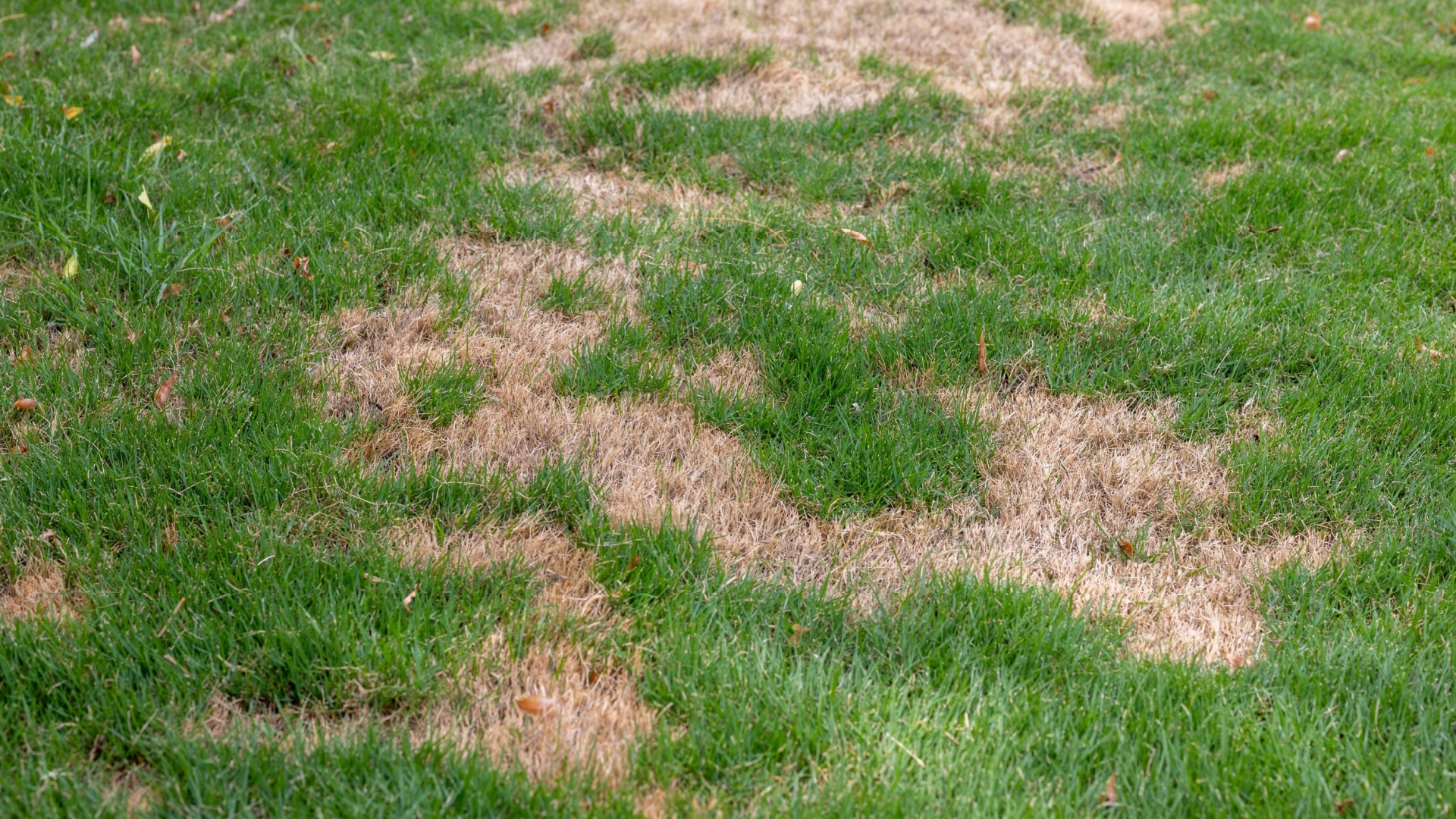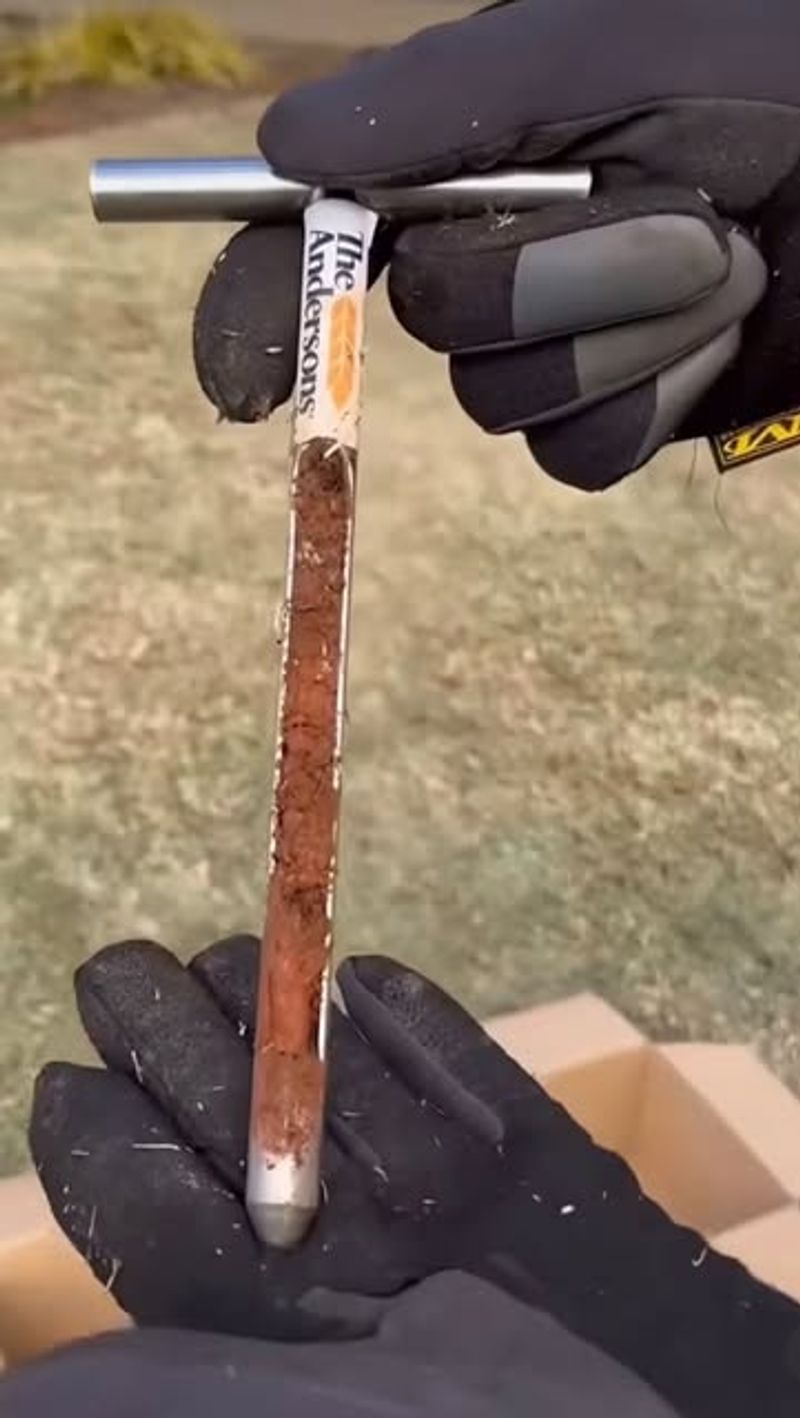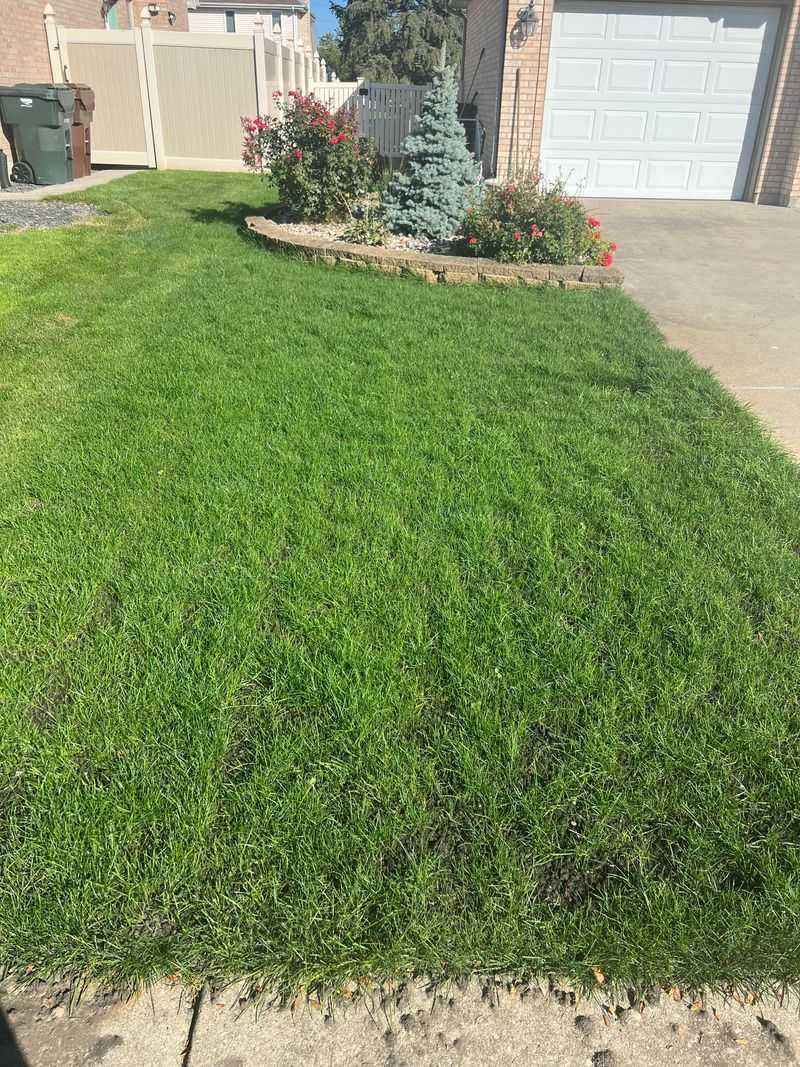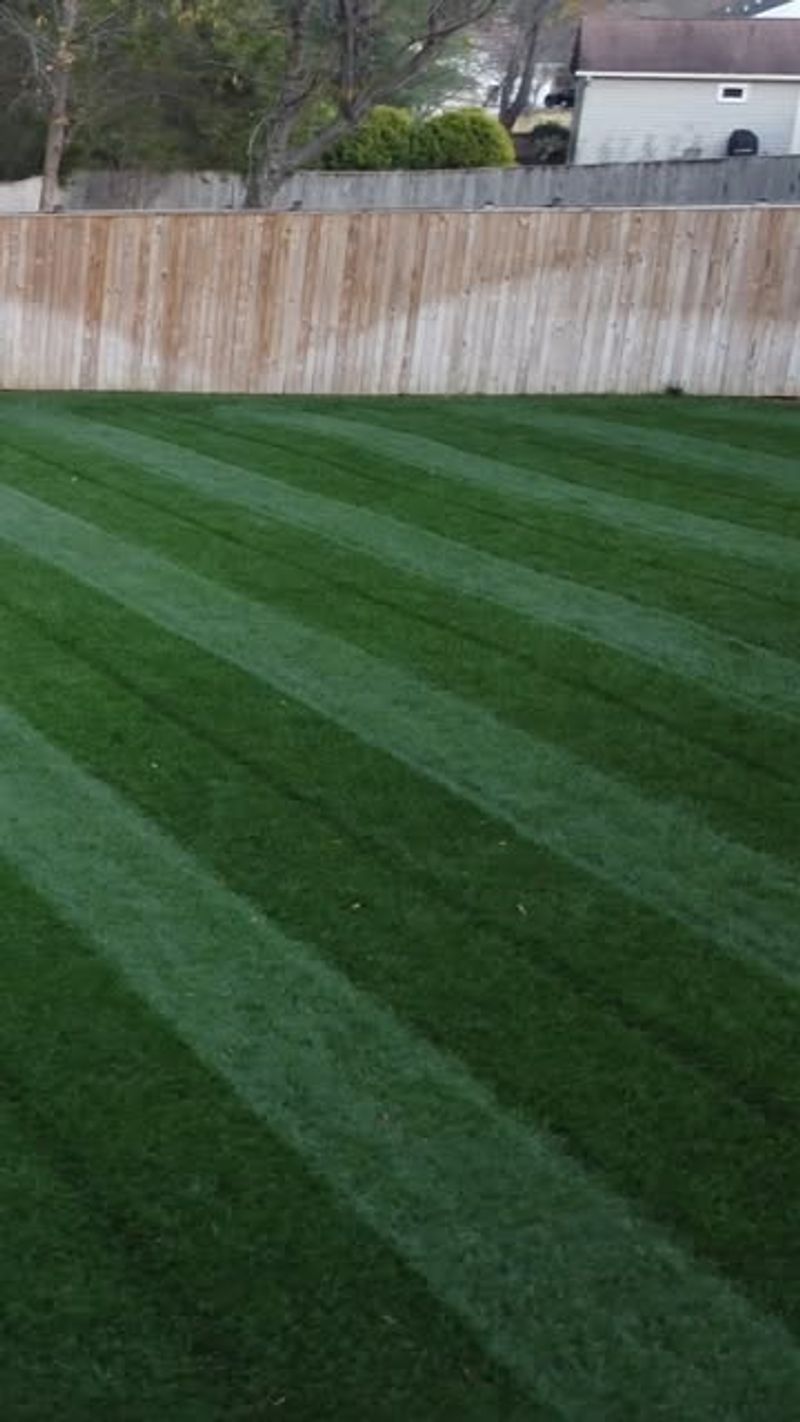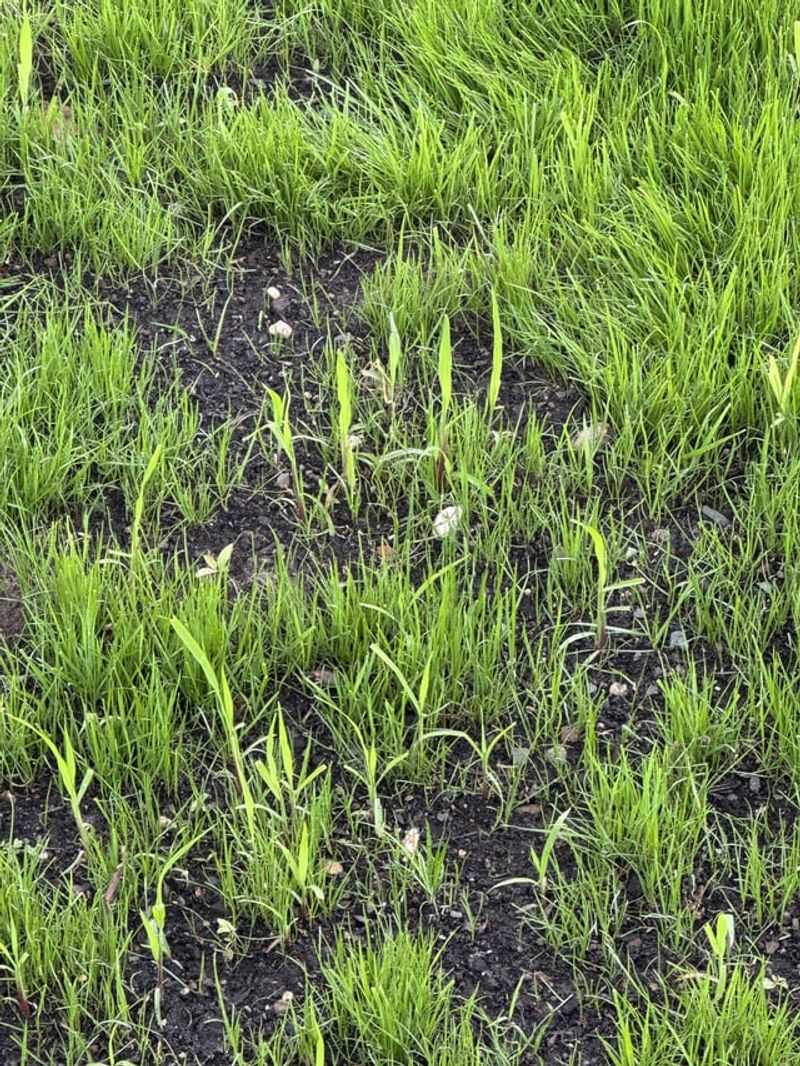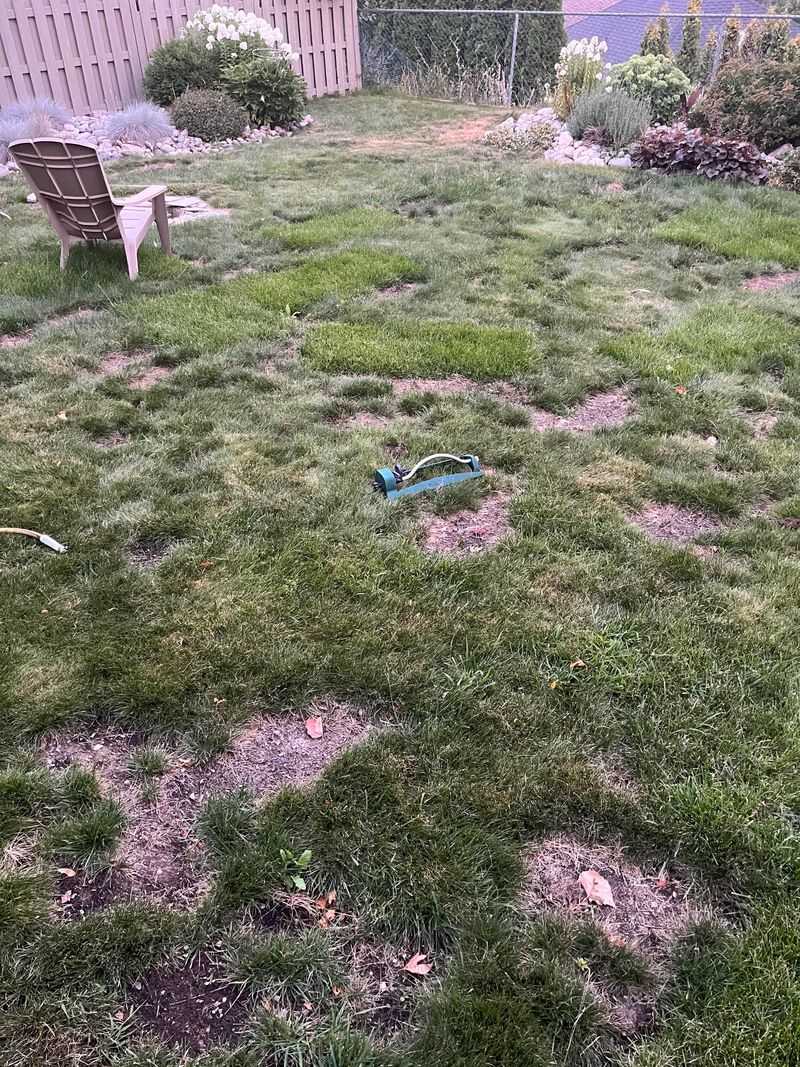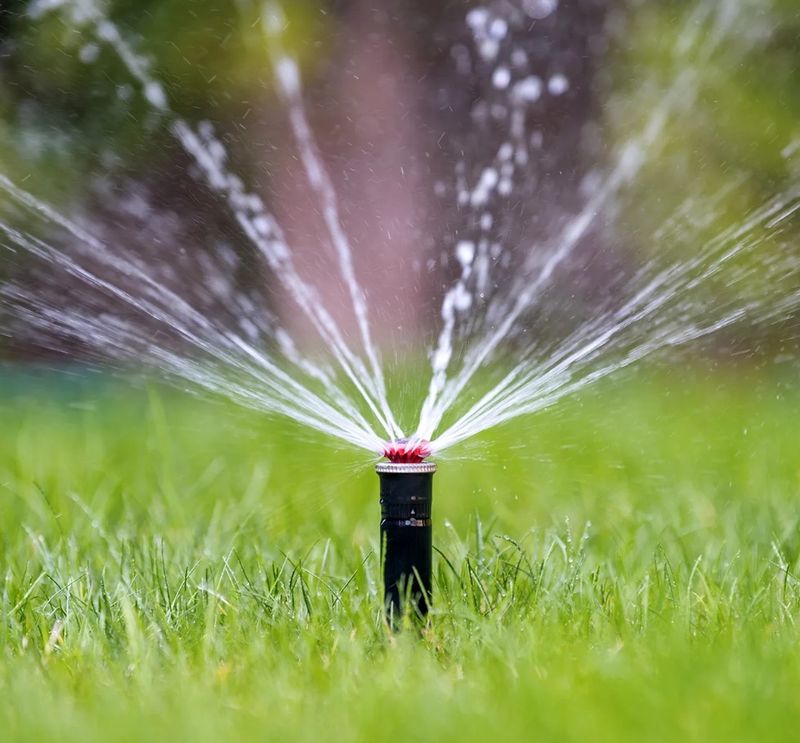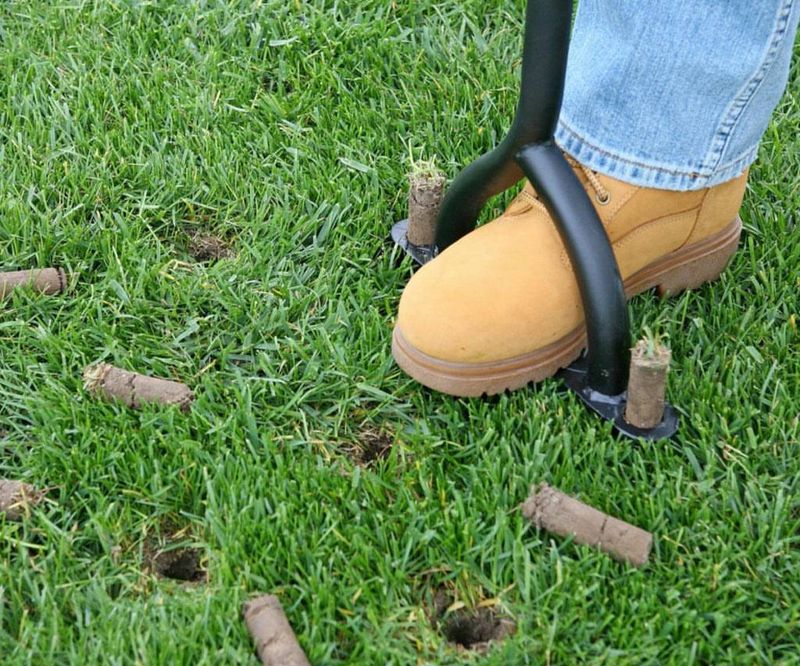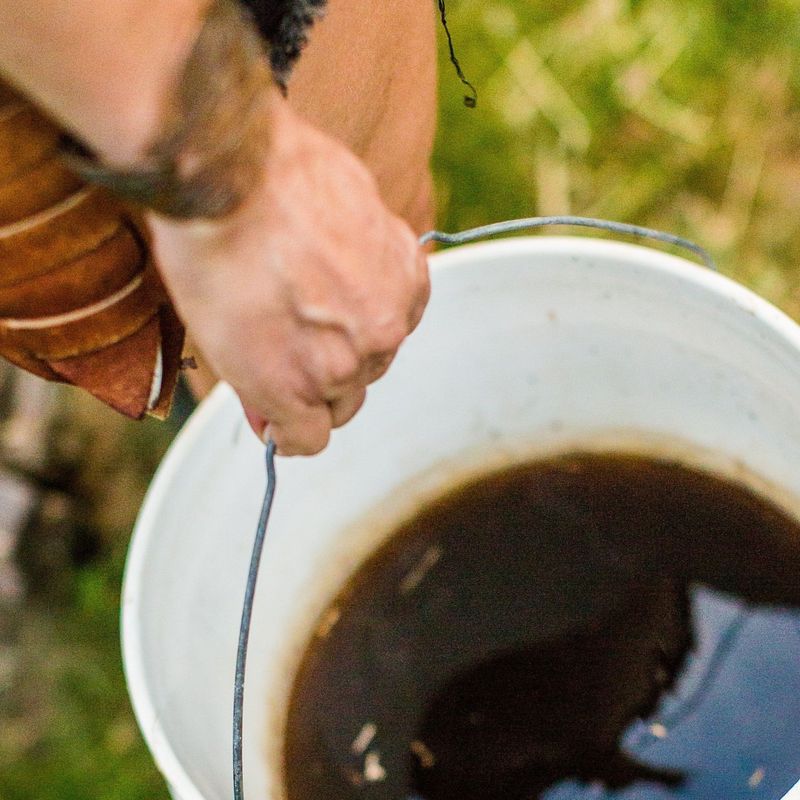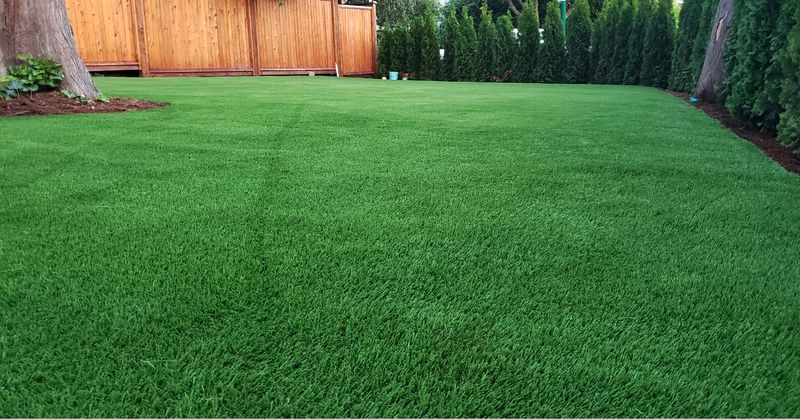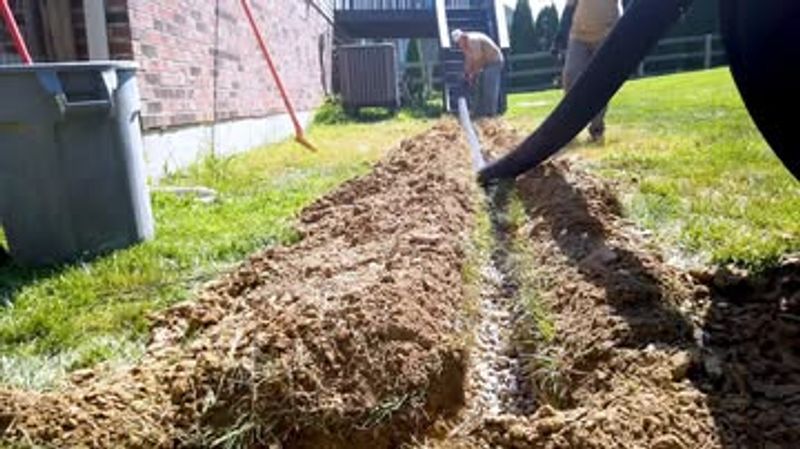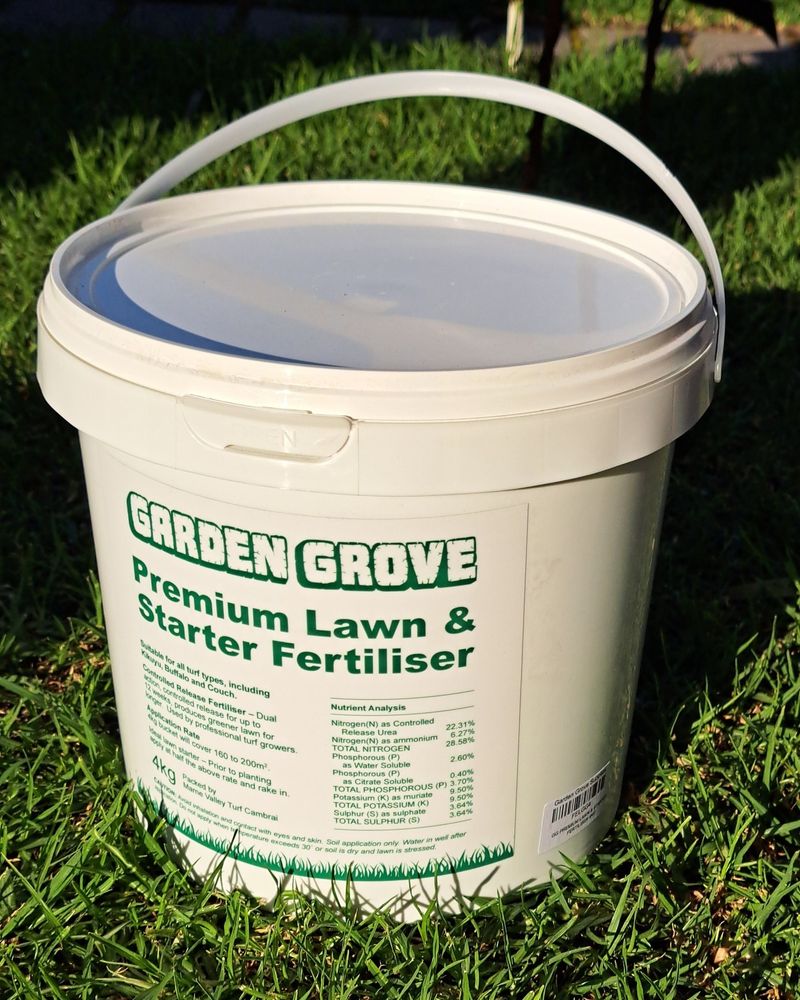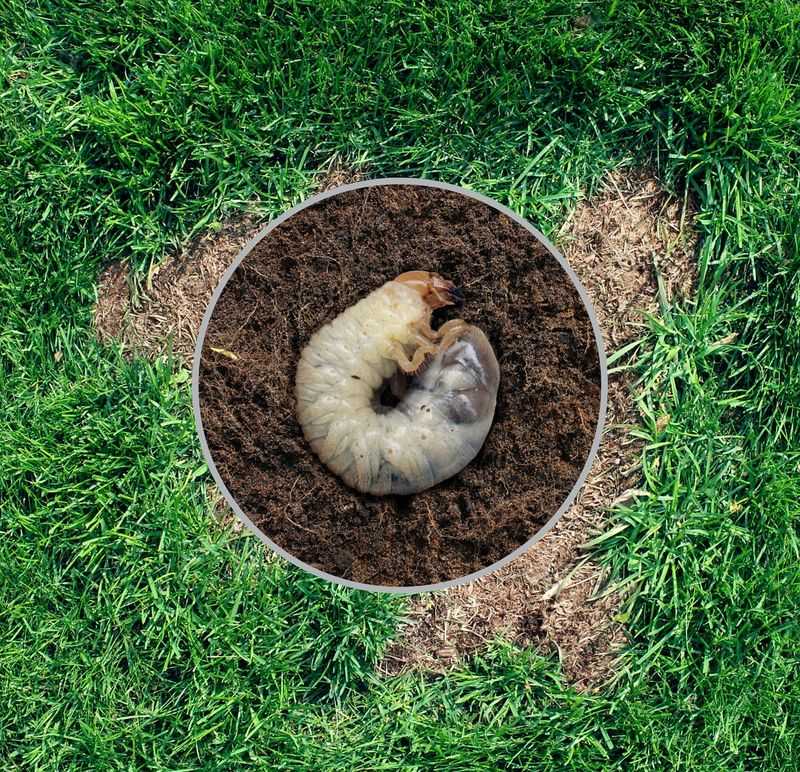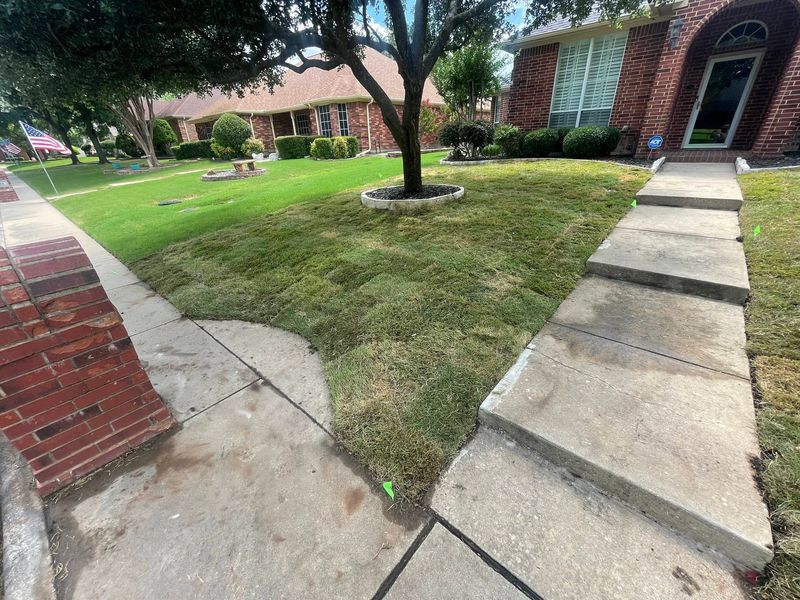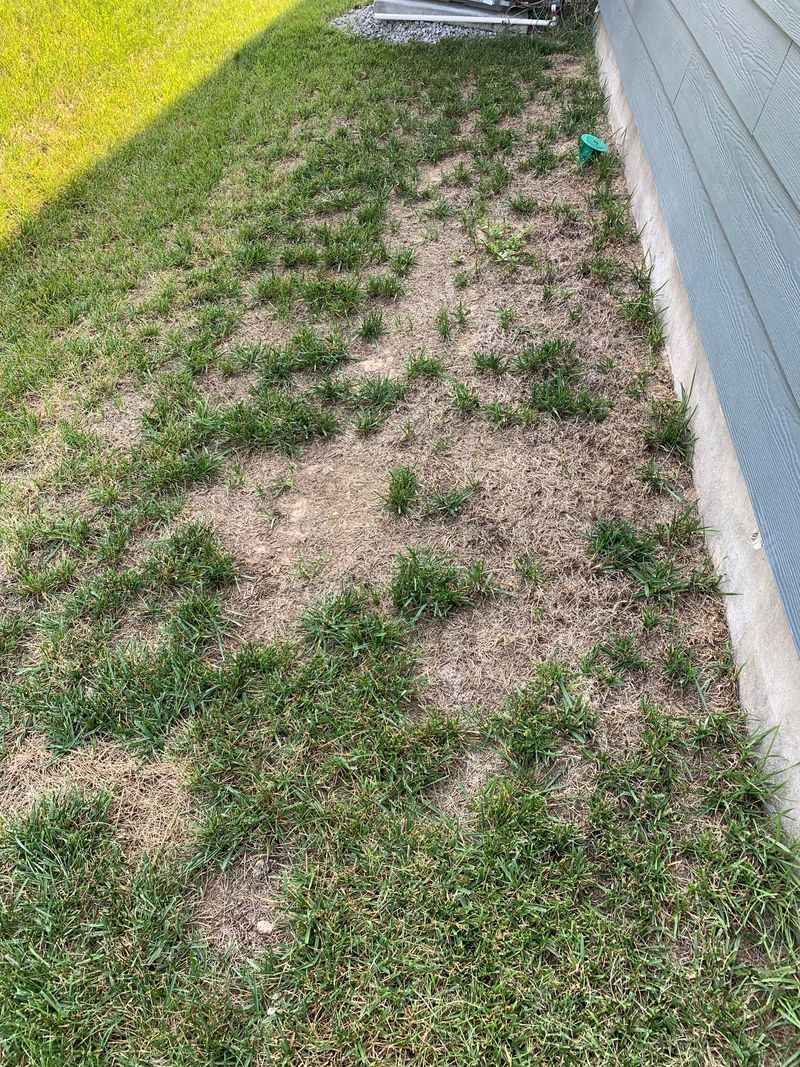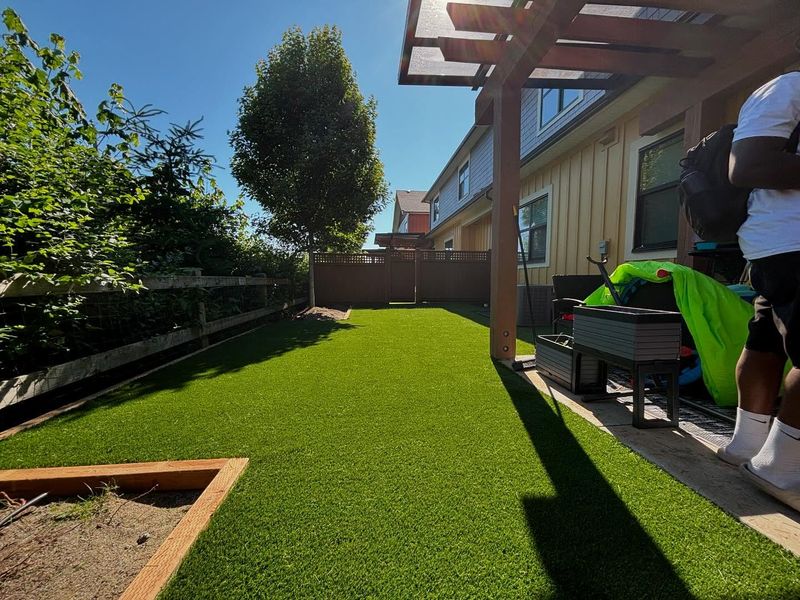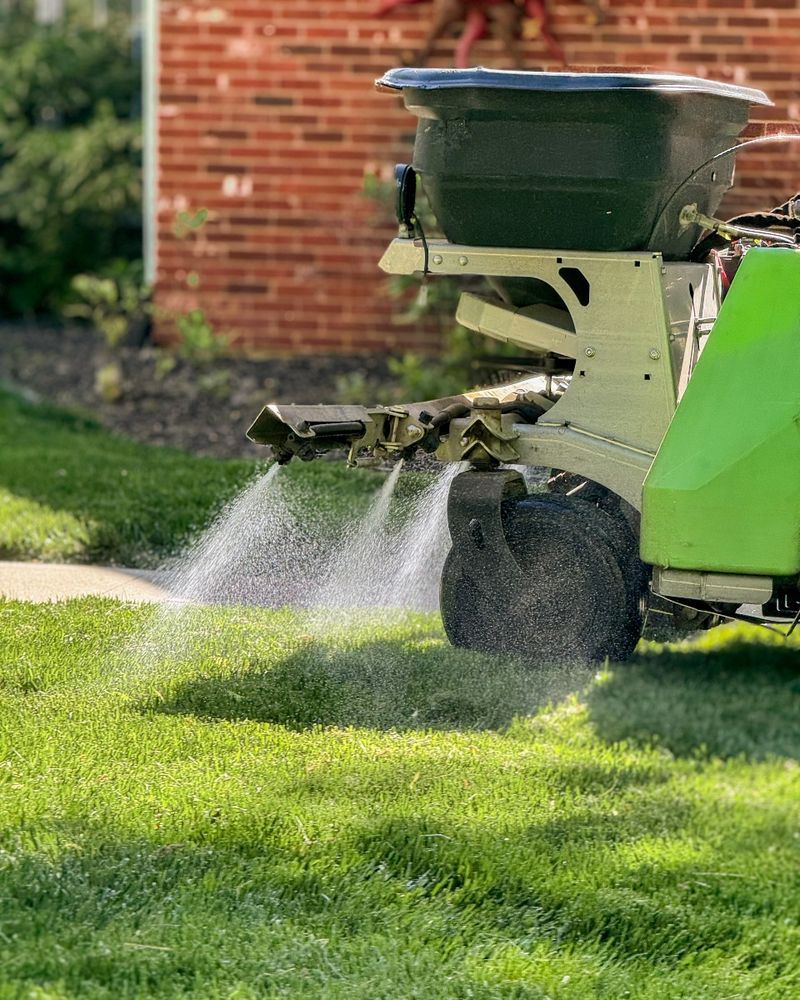So you aerated, overseeded, watered—and still ended up with stubborn bare spots? Don’t worry, you’re not out of options.
When your lawn doesn’t bounce back like it should, it’s time to dig deeper. These 16 fixes offer practical, proven ways to finally fill in those patches and get the lush, green lawn you were aiming for.
1. Test Your Soil
Your soil might be too acidic or lacking essential nutrients. Grab a soil testing kit from your local garden center to find out exactly what’s going on beneath the surface. Once you know what your soil needs, you can address specific deficiencies.
Maybe it needs more nitrogen or perhaps the pH level needs adjusting with lime or sulfur. Think of soil testing as giving your lawn a health checkup – it reveals hidden problems that might be preventing grass growth in those stubborn patches.
2. Add Topsoil to Low Areas
Depressions in your lawn collect water and create poor growing conditions. Fill these spots with quality topsoil, creating a level surface that’s perfect for new grass growth. Make sure to choose screened topsoil without rocks or debris.
Spread it evenly with a rake, aiming for about half an inch at a time to avoid smothering existing grass. The fresh soil provides a nutrient-rich environment for seeds to germinate and establish strong roots.
3. Try a Different Grass Seed Variety
Not all grass varieties thrive in every environment. The seed you used might not be suited for your specific soil type, sunlight conditions, or climate zone. Research which grass types grow best in your region.
Cool-season grasses like Kentucky bluegrass work well in northern areas, while warm-season varieties like Bermuda thrive in southern regions. Local garden centers often carry region-specific seed blends designed to handle your area’s unique growing challenges.
4. Hand-Seed the Bare Spots
Sometimes those trouble spots need extra attention. Rather than spreading seed broadly, focus specifically on bare patches with careful hand-seeding. Loosen the soil surface with a garden rake first, creating small grooves for the seeds.
Sprinkle seeds generously over the area, then gently press them into contact with the soil using the back of the rake. Cover with a thin layer of compost or topsoil to protect seeds from birds and prevent them from washing away during watering.
5. Use Seed Accelerator Products
Seed starter mulches and germination accelerators can dramatically improve results. These products retain moisture around seeds while providing protection from birds and heavy rain. Most accelerators contain wood fibers, fertilizer, and water-absorbing polymers that create ideal germination conditions.
Simply sprinkle the product over freshly seeded areas according to package directions. The protective layer they create helps maintain consistent soil temperature and moisture levels, giving your grass seeds the best chance at successful growth.
6. Improve Your Watering Routine
Poor watering habits often cause seed failure. New grass needs consistent moisture to germinate properly – not too much, not too little. Water newly seeded areas lightly twice daily, keeping the soil consistently moist but never soggy.
Early morning and late afternoon are ideal watering times to minimize evaporation. Consider using a sprinkler timer to maintain consistency, and adjust your schedule during rainy periods to prevent overwatering, which can wash away seeds or cause fungal problems.
7. Check for Soil Compaction
Even after aerating, some spots might remain too compacted for roots to penetrate. Heavy clay soils are especially prone to compaction that prevents water and nutrients from reaching roots. For stubborn areas, try using a garden fork to create additional holes, or consider renting a core aerator for a second pass.
Push the tines fully into the soil and wiggle slightly to create space. Adding organic matter like compost to these areas helps keep soil loose and promotes better drainage and root growth.
8. Apply Compost Tea
Compost tea acts like a probiotic for your soil, introducing beneficial microorganisms that enhance soil health. This liquid gold helps break down thatch and improves nutrient absorption. Make your own by steeping compost in water for 24-48 hours, or purchase ready-made versions.
Apply with a watering can or sprayer to problem areas every few weeks during growing season. The microbes in compost tea create a healthier soil ecosystem that supports stronger root development and more vigorous grass growth.
9. Install Sod for Instant Results
For stubborn patches that won’t respond to seeding, sod provides an instant solution. It’s especially useful for high-visibility areas where you need quick results. Prepare the area by removing any dead grass and loosening the top 1-2 inches of soil.
Cut sod pieces to fit precisely into the bare spots, ensuring tight seams between pieces and existing lawn. Water thoroughly after installation and keep the new sod consistently moist for the first two weeks while roots establish.
10. Address Drainage Issues
Standing water creates conditions where grass struggles to grow. Poor drainage leads to root rot and creates perfect conditions for moss and weeds instead of grass. For minor issues, create subtle slopes away from problem areas using additional topsoil.
More serious drainage problems might require installing a French drain or dry well to redirect water away. Sometimes simply dethatching the lawn improves water penetration enough to solve minor drainage issues in patchy areas.
11. Apply Starter Fertilizer
Regular lawn fertilizer isn’t ideal for new grass. Starter fertilizers are specially formulated with higher phosphorus content to encourage strong root development in young grass plants. Apply starter fertilizer to bare patches when reseeding, following package directions carefully to avoid burning delicate seedlings.
Water thoroughly after application to help nutrients reach the root zone. The extra phosphorus gives new grass the boost it needs to establish quickly and fill in those stubborn bare spots.
12. Check for Insect Damage
Sometimes bare patches persist because underground pests are eating grass roots. Grubs, chinch bugs, and other lawn insects can devastate small areas while leaving surrounding grass untouched. Inspect suspect areas by cutting and peeling back a small section of turf to look for insects.
White C-shaped grubs are a common culprit, often found just below the soil surface. Targeted insect treatments can eliminate the problem, allowing new grass to establish without being immediately damaged.
13. Reduce Shade
Grass needs at least 4-6 hours of sunlight daily to thrive. Areas under trees or near buildings often develop persistent bare patches due to insufficient light. Consider pruning lower tree branches to allow more sunlight to reach the ground.
For areas that can’t get more sun, look into shade-tolerant grass varieties like fine fescue or St. Augustine. Sometimes the best solution is replacing grass with shade-friendly ground covers like pachysandra or hostas in deeply shaded spots.
14. Correct Pet Damage
Dog urine creates nitrogen burns that leave distinctive dead patches in lawns. These spots need special treatment before new grass will grow successfully. Flush affected areas thoroughly with water to dilute remaining salts.
Remove dead grass completely, then add a layer of fresh topsoil before reseeding. Consider training your dog to use a specific bathroom area with gravel or mulch, or try lawn-friendly pet supplements that reduce urine nitrogen concentration.
15. Try Hydroseeding
Hydroseeding applies a slurry of seed, mulch, fertilizer, and binding agents in one step. This professional approach provides excellent seed-to-soil contact and moisture retention. While traditionally done by professionals with large equipment, homeowners can now find small-batch hydroseeding kits for spot treatments.
The green mulch mixture protects seeds while providing nutrients for faster germination. Results typically appear quicker than traditional seeding methods, with more uniform coverage in those troublesome bare spots.
16. Create a Maintenance Schedule
Newly seeded areas need consistent care to establish properly. Create a simple calendar with specific tasks for the first 6-8 weeks after seeding. Include watering frequency, when to apply fertilizer, and when it’s safe to mow the new grass.
Generally, wait until new grass reaches about 3 inches tall before the first mowing, using a sharp blade set to a high setting. Regular monitoring helps catch problems early when they’re easier to correct.

